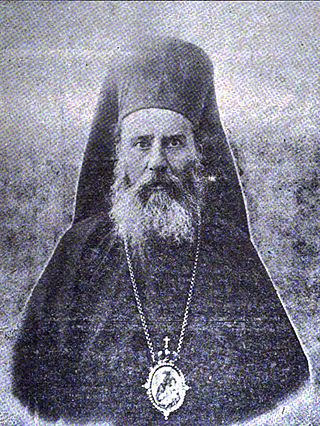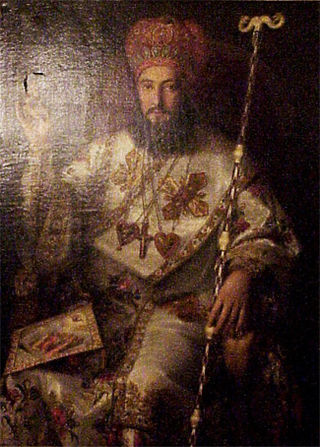
The Melkite Catholic Patriarchate of Antioch is the only actual residential Patriarchate of the Melkite Greek Catholic Church. It was formed in 1724 when a portion of the Orthodox Church of Antioch went into communion with Rome, becoming an Eastern Catholic Church, while the rest of the ancient Patriarchate continues in full communion with the rest of the Eastern Orthodox Church.
Patriarch Cyril VI Tanas, also known as Cyril VI of Antioch, became the first Patriarch of Antioch and All the East, and Alexandria and Jerusalem of the Melkite Greek Catholic Church following the schism of the Greek Orthodox Patriarchate of Antioch in 1724. Cyril re-established full communion with the Catholic Church.

Peter IV Barakat Géraigiry was patriarch of the Melkite Greek Catholic Church from 1898 until 1902.

Maximos III Michael Mazloum, was patriarch of the Melkite Greek Catholic Church from 1833 until 1855. As patriarch he reformed church administration and bolstered clerical education. He was also the first Melkite patriarch granted civil authority by the Ottoman Empire when the Melkites were recognized as a unique millet.
The Basilian Order of the Most Holy Saviour abbreviated BS, also known as the Basilian Salvatorian Order, is an Eastern Catholic monastic order of Pontifical Right for men of the Greek-Melkite Catholic Church. The name derives from its motherhouse, the Holy Saviour Monastery, at Joun in Chouf near Sidon, Lebanon.
Ignatius IV (Youssef) Sarrouf was Patriarch of the Melkite Greek Catholic Church in 1812. He is remembered for both his patriarchate, and for having been, as metropolitan of Beirut, a leading figure in the early history of the Melkite Church.
Agapius II Matar, was Patriarch of the Melkite Greek Catholic Church from 1796 to 1812.
Maximos II Hakim, was Patriarch of the Melkite Greek Catholic Church from 1760 to 1761.
Theodosius V Dahan (1698–1788) was Patriarch of the Melkite Greek Catholic Church from 1761 to 1788.
Macarius IV Tawil was Patriarch of the Melkite Greek Catholic Church from 1813 to 1815.
Cyril VII Francis Siaj was Patriarch of the Melkite Greek Catholic Church from 1794 to 1796.
Athanasius IV Ignace Michael Jawhar was Patriarch of the Melkite Greek Catholic Church from 1788 to 1794. He previously claimed to be patriarch from 1759 to 1764 and from 1765 to 1768.
Patriarch Athanasius III Dabbas (1647–1724), sometimes known also as Athanasius IV, was the last Patriarch of Antioch before the final split of 1724 which divided the Melkite Church between the Melkite Greek Catholic Church and the Greek Orthodox Church of Antioch. He was shortly, from 1705 to 1707, also regent Archbishop of Cyprus, where he is known as Athanasios II.
Patriarch Constantine Cyril V Zaim, sometimes known also as Cyril III, was Patriarch of Antioch.
Neophytos Nasri (1670–1731) was bishop of Saidnaya of the Melkite Greek Catholic Church and took a preeminent part in the 1724 split of the Melkite Church.
Euthymius Fadel of Ma’loula was bishop of Zahle and Forzol of the Melkite Greek Catholic Church and took a preeminent part in the 1724 split of the Melkite Church.

Jeremias III was Ecumenical Patriarch of Constantinople twice, in 1716–1726 and 1732–1733.
Melkite Greek Catholic Archeparchy of Bosra and Hauran is an archeparchy of the Melkite Greek Catholic Church with its territory located in Syria. It is currently governed by Archeparch Nicolas Antiba, BA.
Melkite Greek Catholic Archeparchy of Sidon is a diocese of the Melkite Greek Catholic Church suffragan of the Melkite Greek Catholic Archeparchy of Tyre. In 2010 there were 32,000 baptized. It is currently governed by Archeparch Elie Bechara Haddad, BS.
The Synod of Qarqafe was a council of the Melkite Greek Catholic Church held in 1806. The synod adapted and ratified propositions of the 1786 Synod of Pistoia. It would be formally condemned in 1835 by Pope Gregory XVI in the bull Melchitarum Catholicorum Synodus.